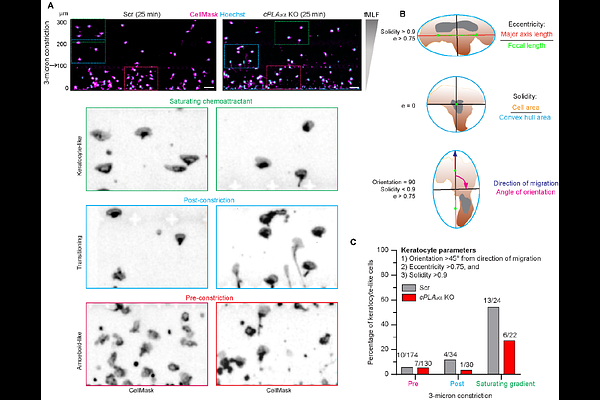cPLA2α Targeting to Exosomes Connects Nuclear Deformation to LTB4-Signaling During Neutrophil Chemotaxis

cPLA2α Targeting to Exosomes Connects Nuclear Deformation to LTB4-Signaling During Neutrophil Chemotaxis
Arya, S. B.; Jordan-Javed, F.; Loesel, K.; Choi, Y.; Collie, S. P.; Hein, L. E.; Baker, B.; Yoon, E.; Parent, C.
AbstractEfficient neutrophil chemotaxis requires the integration of mechanical forces and lipid-mediated signaling. While the signaling lipid leukotriene B4 (LTB4) reinforces cellular polarity, how mechanical cues regulate its production remains unclear. We now show that cytosolic phospholipase A2 (cPLA2), which is essential for the synthesis of LTB4, functions as a nuclear curvosensor. cPLA2 responds to nuclear constrictions by localizing to ceramide-rich inner nuclear membrane microdomains and incorporating onto the exofacial surface of nuclear envelope-derived exosomes. This unique topology enables localized LTB4 synthesis, which promotes myosin light chain II phosphorylation, and sustains polarity and directional persistence after constriction. In neutrophils squeezing through small constrictions, loss of cPLA2 impairs nuclear curvature sensing, exosomal LTB4 production, and post-constriction motility. These findings uncover a cPLA2-dependent mechano-chemical axis linking nuclear architecture to chemotactic efficiency and offering new strategies to modulate inflammatory responses.